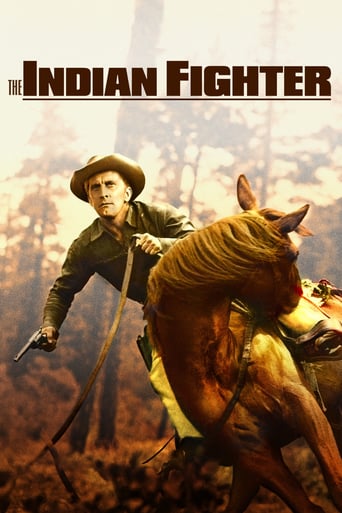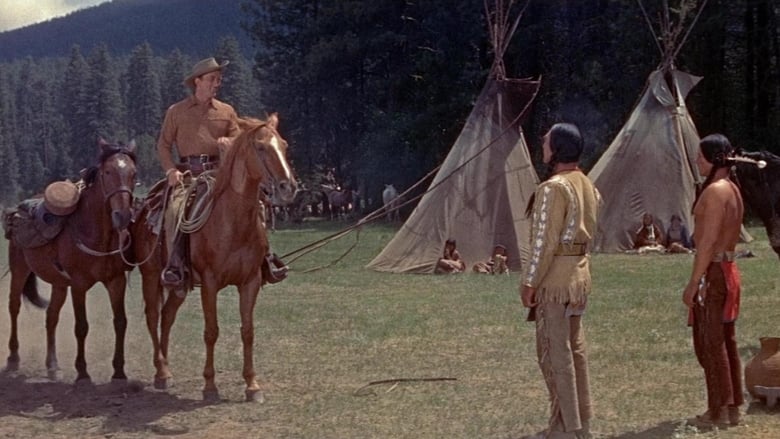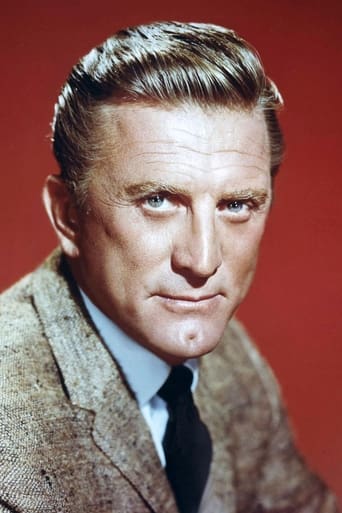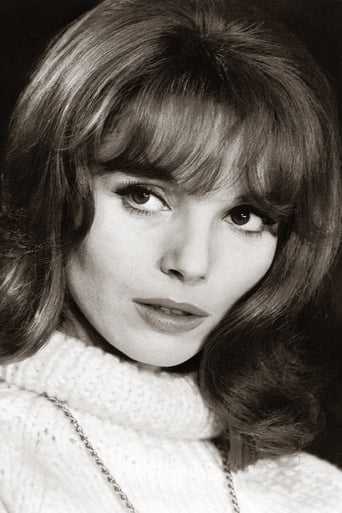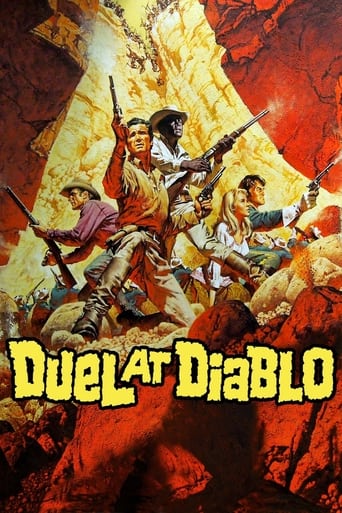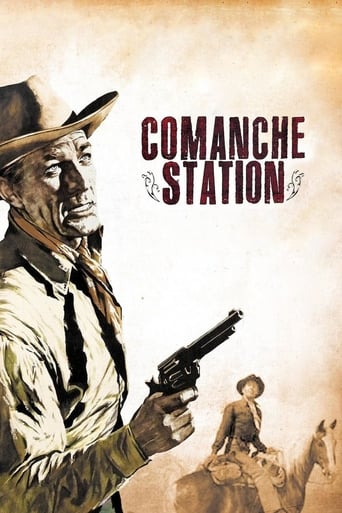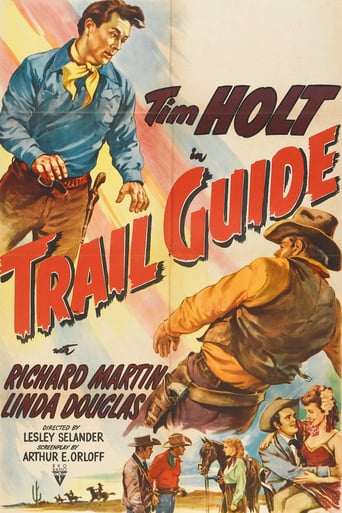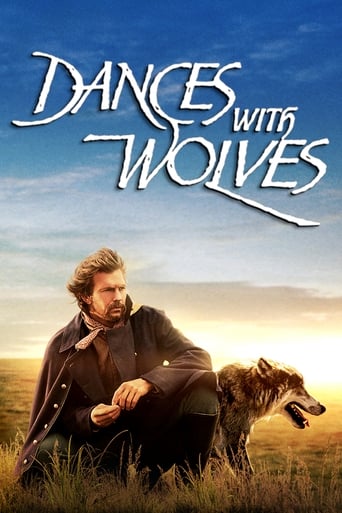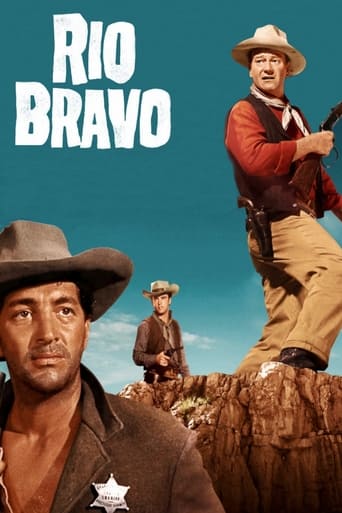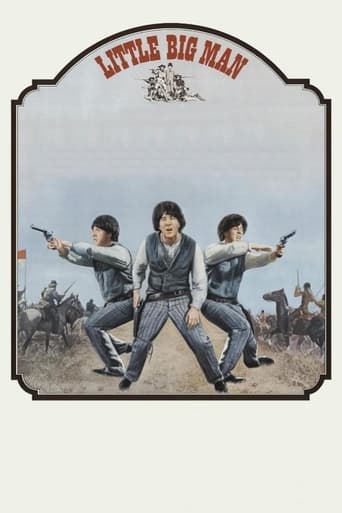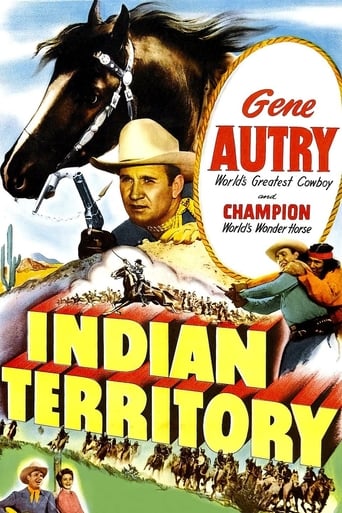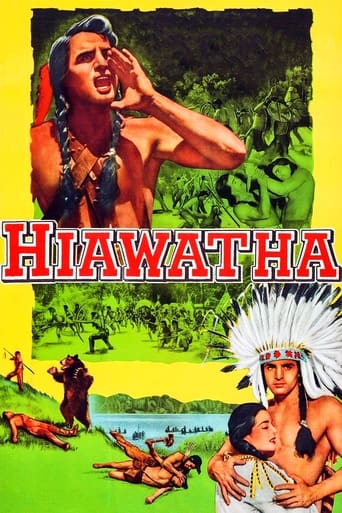The Indian Fighter (1955)
A scout leading a wagon train through hostile Indian country gets involved with a Sioux chief's daughter.
Watch Trailer
Free Trial Channels
Cast


Similar titles
Reviews
I love this movie so much
There are moments that feel comical, some horrific, and some downright inspiring but the tonal shifts hardly matter as the end results come to a film that's perfect for this time.
The movie's not perfect, but it sticks the landing of its message. It was engaging - thrilling at times - and I personally thought it was a great time.
The thing I enjoyed most about the film is the fact that it doesn't shy away from being a super-sized-cliche;
The "Indian Fighter" of the title is Johnny Hawks, a man who made his name fighting Indians. The film, however, does not deal with this part of Hawks's career. The Hawks we see here is more of an Indian Peacemaker, a man determined to prevent war from breaking out between the Indians and the white man. He is tasked with leading a wagon train to Oregon, and this promises to be a difficult task, as the wagons must pass through Sioux territory at a time of tension between the Sioux and the whites. Gold has been discovered on Sioux land, but its whereabouts is currently known only to Indians themselves. Worried about the prospect of an influx of white American gold prospectors, the Sioux leader Red Cloud has decreed death to any of his people who dare reveal the secret of the gold to the whites. Hawks's task is made more difficult by the facts that his party includes two unscrupulous gold-hungry individuals, Chivington and Todd, and that some of the Indians, particularly the whiskey-crazed Crazy Bear, are prepared to defy their leader's edict, even at the risk of their lives. A complicating factor is Hawks's love for Red Cloud's beautiful daughter Onahti. Hollywood's traditional view of the American Indians were that they were primitive, bloodthirsty savages and that the opening up of the North American continent to settlement by the white man was simply part of the march of progress and of the triumph of civilisation over barbarism. Films were still being made from this viewpoint in the 1950s- the Gregory Peck vehicle "Only the Valiant" is a good (or bad) example- but occasionally Hollywood did acknowledge, in Westerns such as "Broken Arrow" or "Apache", that there was another side to the story. "The Indian Fighter", which was produced by its star, the politically liberal Kirk Douglas, is another example. When Hawks points out that the Indians could exchange the gold for things that they value, such as horses and blankets, Red Cloud retorts that to do so would mean losing things that they value even more highly, such as the right to live undisturbed on their ancestral land. Although there are bad Indians, such as Crazy Bear, the general message of the film is that westward spread of white settlement may have represented Manifest Destiny and the advance of civilisation to the white man himself, but to the red man it represented an unwelcome intrusion into his world and the loss of all that he held sacred. The use of the name "Chivington" for one of the villainous whites is significant; the Chivington of this film is a fictional character, but his name is borrowed from the real-life John Milton Chivington, a US Army officer infamous for his obsessive hatred and brutal treatment of Native Americans. As in "Broken Arrow", the main Indian characters are played by white actors. In the case of Onahti, played by the Italian Elsa Martinelli, this may have been to keep the censors happy; the Production Code officially banned the depiction of what it called "miscegenation", but there seemed to be an unofficial rule that relationships between white men and Asian or Native American women were tolerated if the woman was played by a white actress. ("Broken Arrow" also features a romance between a white man and an Indian maiden, played in that case by Debra Paget). In the case of the male characters, however, I could not understand why Native American actors could not be found, especially as the white actors who play these parts were not (unlike Jeff Chandler in "Broken Arrow") major box-office names. I would not rank this film as highly as "Broken Arrow", which is one of the seminal Westerns of the fifties. Douglas made a good number of Westerns, but apart from the modern-day "Lonely are the Brave" and possibly "Gunfight at the OK Corral" I would not regard any of the ones I have seen as falling among his really great films like "Champion", "Lust for Life" and "Spartacus". There is nothing wrong with his performance here, but he never really catches fire as he could do when he was at his best. The action scenes are well-handled, but the plot is not the most exciting and the Onahti sub-plot is a bit of a distraction. This is perhaps a middle-ranking Douglas Western, rather better than, say, "The Big Trees", but not as good as "Along the Great Divide", and certainly not as good as "Lonely are the Brave" or "Gunfight at the OK Corral". 6/10
This first film released by Kirk Douglas's Bryna Production Co. begins with luscious Italian actress Elsa Martinelli(Onahti) slipping out of her clothes in a forest, and taking a bath in a river. Kirk Douglas comes moseying along on a horse, takes a peek, and continues on. But, he'll make his acquaintance more forcefully in the future, always when she is alone and near or in the river. They will end the film floating together in the river. In between these sensual interludes, which are what most people most remember about this film, is more traditional frontier western fare, including bad white men, who want to steal the Indians' gold mine, a bad Indian, who's willing to tell them where the mine is for a jug of whiskey, and a bad wagon train guide who leads the train into the heart of Sioux territory just to have a tryst with the chief's daughter. The later is, of course, Kirk Douglas, as Johnny Hawks. In his absence from the wagoners, bad things happen, which might have been averted if he had been present. These launch a full scale military response by the Sioux, and a panicked retreat of the wagoners to the fort from wince they came. Shirking his duty, even for a few hours of pleasure, made him partly responsible for the travesties that occurred in his absence, and made him vulnerable to the charge of being an Indian lover, rather than an Indian fighter. After all, he usually verbally minimized the chance of a seemingly unprovoked Indian attack, saying that he liked Indians and white folks equally well, and saw no reason why they couldn't get along peacefully(I'm afraid he was a little overoptimistic in this regard). Thus, Johnny Hanks had to redeem himself in the eyes of the whites by taking a leading part in the defense of the fort and inhabitants during the all out charge of the Sioux, who unwisely staged their attack in broad daylight. In reality, Indians very rarely launched a full scale attack, even at night, against a well built fort with an adequate number of defenders. It was simply too lethal, in most cases. They were less able to absorb a large loss of life than the whites. But, such an attack, especially if accompanied by a partial burning of the fort, as in this film, was hard to resist as the climactic 'action' event. Of course, such an attack is also seen in certain other films. Hawks finally ended the battle by escaping the fort to parley with Red Cloud, trying to convince him that further bloodshed wouldn't bring back brother Gray Wolf. Also, he promised that he would bring in the assassin of Gray Wolf(Walter Matthau, as the greedy Wes Todd) to be dealt with in Indian fashion. Lon Chaney, Jr., played his partner Chivington, in the quest for gold. Chivington killed several other Indians, that added fuel to the animosity of the Sioux toward the whites.......Diana Douglas, Kirk's ex-wife, played Susan, a widow with a son. She tried to get Hawks to accompany her to Oregon, but no dice. He preferred Onahti and his accustomed lifestyle......Veteran actor Alan Hale, Jr. played a wagoner who tried to interest Susan in joining him in Oregon, citing his experience growing apples. Walter Abel played Captain Trask, of the fort, while stern-faced Edward Franz played Red Cloud........Ironically, the film was about people moving to Oregon, and was filmed entirely around Bend, Oregon, but the story takes place entirely in eastern Wyoming........I'd like to return to the Hawk-Onahti romance. When Hawks first accosted her, she struck back with a knife, which he took from her. Ignoring her water jars, she ran toward the encampment. Surprisingly, she didn't tattle on Hawks, suggesting possible interest in him. In the second, most memorable incident, again, she was initially hostile, including when he pulled her down in the river shallows and lay on top of her. But, suddenly, she smiled and stopped resisting. Later, they relaxed under a tree and talked about Hawks need to continue with the wagon train vs. his desire to be with her. Hawks' defeat of Grey Wolf, in a staged duel, may have influenced her perception of him. Next, they independently cooperated in subduing Gray Wolf-killer Todd, and bringing him in to stand Indian justice. Lastly, of course, they are floating together in the river........In all, one of the most memorable westerns you will find. See it at You Tube.
I have heard of this film but I don't recall watching before - I recently viewed the film because I'm watching westerns with Lon Chaney Jr. Well this film is really cute - great cast and Chaney gets a good role to play in this one.The real star of the show is of course our 'hero' Johnny Hawks played quite wonderfully by Kirk Douglas. Elsa Martinelli is Onahti a Indian woman who falls for Johnny. Johnny falls for her too but has to lead a wagon train to Oregon but promises her he will return to her.This film has plenty of comedy, drama action and adventure and it's better than your average western to me. The Native American people are shown in a good light for the most part - better than most films of the time era (1950s - 1960s western films).9/10
I had noticed this video for rent several times, but had always thought that the cover photo showed Kirk Douglas with Natalie Wood. Much to my surprise, it turns out not to be Natalie at all, but someone far more unusual, Elsa Martinelli, someone it seems I know best as Charlton Heston's love interest in "The Pigeon That Took Rome", the slim but pleasant comedy from 1962.In fact, this film is "introducing Elsa Martinelli", a fresh import from Italy at the time. Bell' Italia indeed. Elsa introduces herself to us in the opening scene by undressing completely to go for a quiet dip in the river. So it's going to be la dolce vita along the riverbank, it seems...As the beautiful long-haired Indian maiden, Elsa finds herself teamed with Kirk, brandishing his chin and his triangular physique. The Wild West lives up to its name, not only with the Indians' fiery attack on the army fort, the film's climax, but also with the steamy roll in the "surf" by our two principals, a couple of years after "From Here to Eternity".The film offers Elisha Cook an unusual part to play, a photographer who had worked with Matthew Brady during the War, and who now wants to immortalize the West with his camera as advertising to attract settlers. The film understands the dichotomy of preservation and destruction that his character represents.Walter Matthau and Lon Chaney are the bad white men, while Alan Hale (Gilligan's Skipper) and Frank Cady (Green Acres' Mr. Drucker) round out a nostalgic supporting cast.Produced by Kirk Douglas's own production company, Bryna, "The Indian Fighter" can't help but have a social conscience. It does show the strong influence of the message Western -- in its interracial romance, Cook's proto-Ansel Adams character, and so on -- but without sacrificing the adventure elements of the story.The film boasts some spectacular Oregon scenery. It's not the Monument Valley desert landscape we're used to seeing in so many other epic Westerns when directed by John Ford, but rather mountainous and riverine terrain, more like what Ford showed us in "How the West Was Won" (1962).André De Toth provides good solid Cinemascope direction, letting the widescreen process work its own wonders on the audience. The film however does betray more brutality than I would have expected, especially for its day.All in all, an adventure story intelligently and attractively handled, with some depth for those who care to look.

